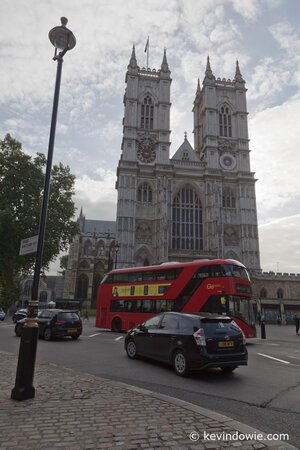Imagine the scene, you’re a tourist in London taking in the view of Westminster Abbey, one of the most iconic, historic, buildings in the world. The famous facade, puffy clouds in the sky, you have a composition in mind, all set. Only one problem, London is, of course, one of the world’s biggest, and busiest, cities, with traffic to match. Getting a clear photo of the abbey is virtually impossible.

 Above. Waiting for traffic to clear? Good luck with that!
Above. Waiting for traffic to clear? Good luck with that!

 Westminster Abbey, London. A multi-image composite.
Westminster Abbey, London. A multi-image composite.
Normally I would crop the composite image to give clean edges. In this case, I decided to leave the edges au naturel!
The stack mode composite.
Westminster Abbey, London. A multi-image composite. Normally I would crop the composite image to give clean edges. In this case, I decided to leave the edges au naturel!
As previously explained, the stack mode composite method can be a great way to deal with digital noise when using high ISOs to photograph static subjects in low light, however, the technique can also be useful as a compositing system in circumstances such as these. The technique will retain detail in the stationary elements in the frame but allow the moving elements to blend in. The extent to which those elements will blend in and “disappear” will depend largely on how many frames are combined. The more frames the greater the blending away effect. ~KD.
